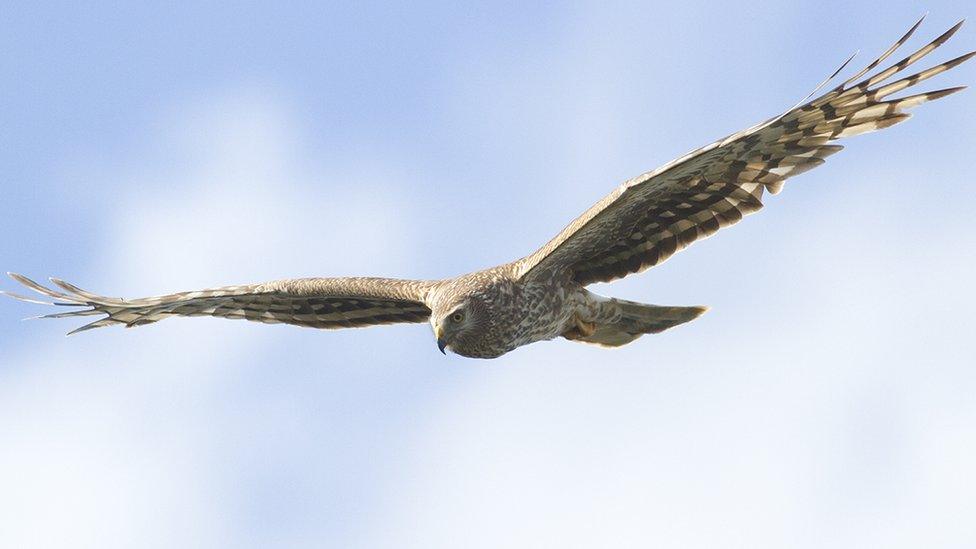Ten endangered hen harriers hatch in Northumberland
- Published

Three nests produced hen harrier chicks this year
Ten hen harrier chicks have hatched in Northumberland, despite fears that the endangered bird of prey is heading for extinction in England.
The Northumberland Hen Harrier Protection Partnership (NHHPP) said three of five nesting pairs in the county produced young this year.
The Royal Society for the Protection of Birds (RSPB) says the iconic species is under "severe threat".
The NHHPP said the news was a "positive step" in efforts to re-establish them.
Illegal killings, along with destruction of their habitat, are behind the collapse of their population in England. Numbers fell from 12 pairs in 2010 to four in 2016.
Numbers of pairs in Scotland fell from 505 to 460 over the period, while in Wales they declined from 57 to 35 breeding pairs.
In Northern Ireland, pairs fell from 59 recorded in 2010 to 46 in 2016.

Hen harrier numbers have fallen over decades
The NHHPP said the Northumberland figures showed the county was bucking the trend.
Chairman Andrew Miller said: "Hen harriers are still facing an uphill battle to re-establish themselves in the uplands of England.
"However with the positive support of all our partners including key landowners, 10 young birds have successfully fledged.
"Working together and using the latest scientific techniques is also increasing our knowledge of this amazing species.
"We will continue to monitor our birds throughout the year and hope that this year's youngsters will stay safe and be as successful as Finn"
Mike Pratt, chief executive of Northumberland Wildlife Trust, said "The news that several pairs of hen harriers nested and bred successfully, raising 10 young, in the uplands of Northumberland is very encouraging and speaks loudly of the partnership between conservationists locally in protecting the birds."
Historically, hen harriers were once much more widespread before being driven to extinction in mainland Britain during the 19th Century.
Despite a subsequent comeback, the species has remained rare in the UK, with a breeding population under 1,000 pairs.